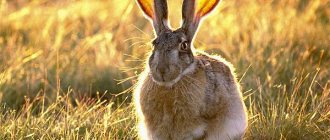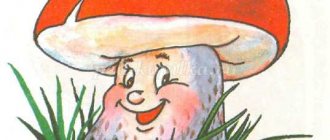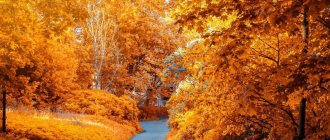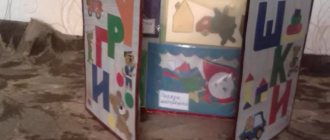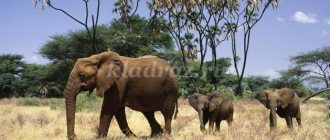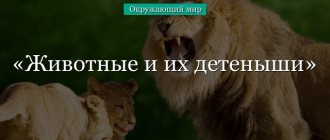Specifics of the fauna of hot regions
Nature has protected animals living in extreme heat. So, many of them have thick, but relatively short hair that perfectly protects them from the sun's rays. Just look at cheetahs, giraffes, zebras and all the monkeys.
Important! However, unlike their counterparts from the northern regions, they do not have a thick undercoat that retains heat.
Others, such as hippopotamuses and camels, have a large layer of fat, which, if necessary, is converted into water and prevents dehydration.
Animals in warm regions do not hibernate because they do not have to wait for the warm season. They also do not require migration to hot countries.
Summary of an art lesson in the preparatory group. Animals of hot countries
Summary of a lesson on visual arts in the preparatory group: “Animals of hot countries”
1. Correctional and educational: -Deepen and expand children’s knowledge about animals of hot countries, activate vocabulary on the topic, clarify the name of animals of hot countries. (Integration of the educational area "Cognition") -Continue to develop the need for motor activity through exercises (Integration of the educational area "Physical Education") -Develop the skill of strengthening and maintaining correct posture in various activities, strengthen the muscles of the arch of the foot (Integration of the educational area "Correction" ") 2. Correctional and educational: - To cultivate the desire to study nature and the living inhabitants of the Earth, a caring attitude towards nature. (Integration of the educational area “Cognition”) - Teach children to take care of materials, put them back in their place after work. (Integration of the educational field “Labor”) 3. Corrective and developmental: - The ability to use non-traditional techniques for depicting animals - monotype, to think about the content of the drawing (Integration of the educational field "Artistic Creativity") - Continue to replenish the literary baggage. (Integration of the educational field “Reading fiction”) Methodological techniques: asking riddles, a surprise moment (writing), looking at illustrations, physical education, exhibition of children's works. Aids: Multimedia installation, writing, riddles, A3 and A4 sheets, brushes, rags, brush holders, gouache, watercolor, ball Lesson
progress.
Educator: Look, guys, there are some pictures hidden on our screen and to see them you need to solve riddles and then they will open, don’t you agree? (slide 1) Children: Yes! Educator: Well, listen! A log is floating along the river - Oh, and it’s furious! Those who fall into the river will have their Nose bitten off.... Children: Crocodile! (picture 1 opens) Educator: That's right, crocodile. He walks with his head up, Not because he is an important count, Not because he has a proud disposition, But because he...... Children: Giraffe! (picture 2 opens) Educator: That's right, giraffe! There is a lot of strength in him, He is almost as tall as a house, He has a huge nose, As if his nose has been growing for a thousand years. Children: Elephant! (picture 3 opens) Vosp: Well done, guys! What, in one word, should we call these animals? Children: Animals of hot countries, wild animals. Educator: Well done! Let’s play a game... Guess it” (with a ball)
1. What can you say about?
Elephant...(trunk, tail, tusk) Rhinoceros...(horn) Lion...(mouth, mane) Giraffe...(neck, mane) Ostrich...(feathers, legs), etc. 2. Animals move differently. How does a crocodile move? (swims, walks) And the rhinoceros? (walks) And the monkey? (climbs, jumps over) And the turtle? (crawls), etc. Game "Guess Who!"
The teacher names the signs of the animal, by which the child must guess who he is talking about.
Stomps like... an elephant Runs like... a horse Wiggles like... a snake Hardy like... a camel Fat like... a hippopotamus Slow like... a turtle Repeats like... a parrot Curls like... a monkey Shaggy like... a lion. There is a knock on the door. Educator: Someone is knocking on the door. (The teacher goes to the door and returns with a letter). The guys sent us a letter. (The teacher prints out the letter and reads it to the children). Educator: Guys, this is a letter from Dunno, (slide 4) he writes that he is going to hot countries, but forgot what the wild animals that live there look like, and asks you guys to draw these animals for him. He also writes that there are many rivers there. Can you help Dunno, guys? Children: Yes, we will help! Educator: But before we start drawing, let's play a little. (slide 5) Physical exercise “Funny Animals”
Vos: Well done, guys!
Good playing. Educator: And let's draw Dunno animals with reflections in the water. It's like animals walking by the river. Fine? Children: Yes! Educator: Before drawing, let's, guys, remember what these animals look like. Children: The elephant has a long trunk and big ears, the giraffe has a long neck and is orange with brown spots, the crocodile is green with a long muzzle and tail, the zebra looks like a horse, only it is striped, white and black stripes…. Educator: Well done, guys! We go to our places, fold the sheet in half. And you draw only on one half of the sheet, and leave the other blank. Once you have painted on one half of the sheet, quickly before the paint dries, wet the other half of the sheet and connect (fold) both parts of the sheet. You can iron it by hand. The teacher walks through the rows and helps children in need of help. Vosp: Well done, guys! Let's put all the drawings together for the exhibition. The teacher and the children look at the drawings, evaluate them, choose the ones that are most interesting, the ones they like, and the ones that are neat. Educator: Guys, do you think Dunno will like your drawings? Children: Yes! Educator: I think so too. Then I will send him your drawings, and he will take them on his trip. Guys, did you like our games? What did you like most? What new did you learn in our lesson?
We recommend watching:
Synopsis of educational activities for children of the senior group Synopsis of educational activities for artistic and aesthetic development in the preparatory group Synopsis of a drawing lesson in the preparatory group “The Rooks have arrived” Synopsis of a drawing lesson in the preparatory group of the kindergarten. Visit the Fairy of Kindness
Similar articles:
Summary of GCD in the preparatory group on the topic: Professions
Lesson notes for the preparatory group. My family
Lesson notes for the preparatory group. Primitive people
Lesson notes for the preparatory group. Tolerance
Lesson summary for kindergarten on the topic “Human Rights”. Preparatory group
